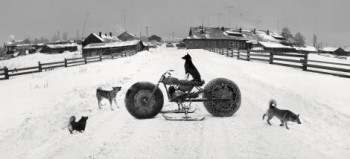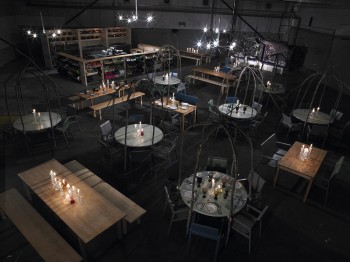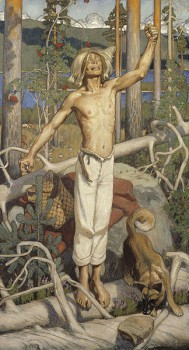Archive for 2010
Dog days
30 September 2010 | This 'n' that
How does he do it? The dogs pose in Pentti Sammallahti’s photographs like professional models who know how to keep still.
Sammallahti admits sausages and sardines sometimes help communication.
In 1998, in the old, printed version of Books from Finland, we published a selection of Sammallahti’s photographs, together with some written impressions by the British photographer and essayist John Berger. According to him, people who first see the selection of Sammallahti photographs he has, ‘usually gasp at first, and then peer closer, smiling,’ as they seem to remember something they knew as children, but which they have forgotten how to see – from the times ‘we talked to the dogs, listened to their secret and kept it to ourselves.’
Sammallahti (born 1950) is one of the pioneers of the Finnish photographic art and fine art printing, which he has also taught at the University of Industrial Arts and Design in Helsinki.
Specialising in black-and-white photography of people and their environment, Sammallahti has travelled extensively throughout Russia and Siberia, France and Finland. This autumn his work is featured in a retrospective exhibition at the Finnish Museum of Photography in Helsinki; you can see a selection of his photos here.
I am me
30 September 2010 | Fiction, Prose
Extracts from the novel Poikakirja (‘The boy’s own book’, Otava, 2010). Introduction by Mervi Kantokorpi
It’s a small day in spring. Another name for the lark is the skylark. You can only see them sometimes, and even then they’re so high up in the sky that they swoop like fast-moving dots.
The kitchen windowpane is rippling with stripes. The window has a bottom, and at the bottom there is some cotton wool and two opened matchboxes, a blue Sampo and a picture of an army chaplain in his uniform and insignia. As spring has progressed the cotton wool at the bottom has turned into wet blobs and the matches will never light again, as they’ve sucked up the winter frost from the glass.
Most children are made at home but not us, says Eini during walking practice. Outi shoves her, tells her to be quiet and walk in rhythm. I’m behind the table reading the Children’s Encyclopaedia, but I watch them. With every second step, their bottoms swing to the right and then to the left.
Mum comes into th the kitchen and asks what they’re doing; Anna-Liisa responds on the twins’ behalf, says they’re practising walking like in the movies and that’s why they’re wiggling their hips. More…
Portrait of the artist as a young boy
30 September 2010 | Reviews
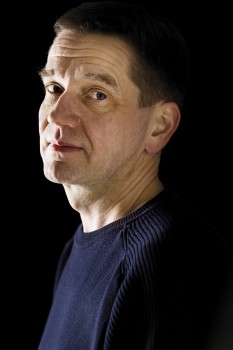
Olli Jalonen. Photo: Katja Lösönen, 2008
Poikakirja (‘The boy’s own book’), Olli Jalonen’s 13th novel to date, continues an ongoing narrative often nominally examining the author’s own family history. In this novel the first-person narrator is the young ‘Olli’ in his first years at school, and his story is the present-tense monologue of a boy between the ages of 7 and 10. The choice of the present tense underlines a certain sense of ‘perpetual now’ in the intensive narrative of childhood.
Jalonen (born 1954) is one of the acknowledged masters of contemporary Finnish prose. His expansive novel Yksityiset tähtitaivaat (‘Private galaxies’, 1999) was an astonishing demonstration of the author’s desire to combine his cyclical understanding of history with a highly sensitive depiction of humanity. The work brought together three of his earlier novels and shaped them into an entirely new composition: at over 800 pages, it would be no exaggeration to call the resulting work a kind of symphony. More…
Elina Hirvonen: Kauimpana kuolemasta [Furthest from death]
30 September 2010 | Mini reviews, Reviews
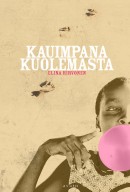 Kauimpana kuolemasta
Kauimpana kuolemasta
[Furthest from death]
Helsinki: Avain, 2010. 240 p.
ISBN 978-952-5524-81-9
€ 30, hardback
Elina Hirvonen (born 1975) came to international attention with her first novel, Että hän muistaisi saman (English translation: When I forgot). With Kauimpana kuolemasta she shows that her success was well deserved: she has both talent and originality, and also courage linked with a sense of form. This book belongs to the genre of Finnish novels set at the interface between two countries, a device that in some hands can become a facile dramaturgical trick for the creation of contrasts. The interweaving of human stories from Finland with stories from Zambia sets all the alarm bells ringing, but the encounter between Paul and Esther, two sad people who lack a secure homeland, vibrates with emotion-charged scenes. Paul is the son of Finnish overseas aid workers, Esther is an outcast from her Zambian village, in flight from one hell to the next. Slowly Paul and Esther are brought together and the reader hovers in uncertainty as to whether their paths will ever cross. The two characters see and experience violence as they journey towards pain, but Elina Hirvonen’s sensual and life-affirming language conveys the realisation that hope is – sometimes – stronger than death.
Anja Snellman: Parvekejumalat [Balcony gods]
30 September 2010 | Mini reviews, Reviews
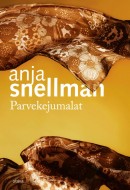 Parvekejumalat
Parvekejumalat
[Balcony gods]
Helsinki: Otava, 2010. 316 p.
ISBN 978-951-1-22756-4
€ 31.80, hardback
The theme of this novel is delicate and still largely silenced: the collision between the cultures of Muslim immigrants and the local population. Immigration into historically homogeneous Finland is a comparatively newer phenomenon than in many other European countries. Like other teenage girls, the Somali girl Anis dreams about partying, boys and a future, which completely deviaties from the customs and ideals of her patriarchal Muslim family. Her counterpart, the Finnish girl Alla, wishes to convert to Islam, because she has found herself suffering at home from the consequences of Western ‘freedom’ and is left with a feeling of devastating insecurity. Islamic culture’s halal and haram (strictly ‘good’ and ‘bad’) crushes or is crushed in Finnish life. The provocative contrasts and solutions presented in Snellman’s novel (her 19th) appear occasionally overemphasised. In defending the right of women to determine their own lives, Snellman (born 1954) deals Anis an extraordinarily tragic fate.
Just business?
24 September 2010 | Letter from the Editors

Money, money, money... Photo: Twid/Wikipedia
Through his work, a writer provides a living for both himself and his publisher. The publisher makes his profit through the work of his writers, and both parties are satisfied. Is this how it goes?
The novel Puhdistus (Purge, 2008) by the Finnish author Sofi Oksanen (born 1977) has been translated into 13 languages, including English, and by now it has sold who knows how many copies.
One would imagine her publisher would like to live happily ever after with his superstar, and perhaps also vice versa – for WSOY (est. 1878) has long been one of the most powerful, as well as the most enlightened, publishing houses in Finland. More…
HEL YES!
24 September 2010 | This 'n' that
Run that by me again, please?
Oh: HEL is the airport abbreviation of Helsinki, and the second word completes the title given to a pop-up restaurant set up by a team of Finnish designers and chefs in London. It takes place at 1–3 Wenlock Road, London N1, between 15 September and 3 October.
HEL YES! is commissioned and produced by the Finnish Institute in London as part of its Arts & Culture Programme, in anticipation of Helsinki’s role as World Design Capital in 2012.
The restaurant offers inventive Finnish dishes, the dinner service plates are mix ‘n’ match vintage Iittala and the diners sit on Alvar Aalto and Artek’s ‘403’ chairs painted in a new range of colours.
We hear the reservations for dinner are now been fully booked, but coffee and drinks are available in the restaurant, a former depot. See what the press said, here.
Maarit Knuuttila: Kauha ja kynä. Keittokirjojen kulttuurihistoriaa [The ladle and the pen. The cultural history of the cookbook]
24 September 2010 | Mini reviews, Reviews
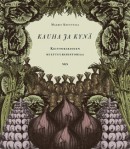 Kauha ja kynä. Keittokirjojen kulttuurihistoriaa
Kauha ja kynä. Keittokirjojen kulttuurihistoriaa
[The ladle and the pen. The cultural history of the cookbook]
Helsinki: SKS (The Finnish Literature Society), 2010. 207 p., ill.
ISBN 978-952-222-187-2
€ 26, hardback
This book by ethnologist Maarit Knuuttila describes the history of European cookbooks, recipes and cooking. Knuuttila familiarises the reader with the earliest documents relating to the preparation of food, which were written by the ancient Greeks and Romans, but of which only a few have been preserved. Instead of haute cuisine the book concentrates on the authors and users of basic Finnish cookery books, and examines how those books reflect the times in which they were written, as well as their significance for women. While the literary high culture of gastronomy has been produced mainly by men, the everyday dishes represented in the basic cookbooks are the work of women. The author discusses the changes in perceptions of the ideal home and health, as well as the ways in which Finnish cookery, housekeeping and food culture have altered during the past hundred years.
One-night stand: an interview with publisher Leevi Lehto
17 September 2010 | Interviews
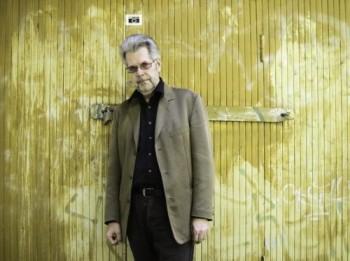
Leevi Lehto. Photo: Lotta Djupsund/Savukeidas
Founded by poet Leevi Lehto, ntamo is seen by many as the black sheep and enfant terrible of the world of Finnish publishing.
From its inception, ntamo (shortened from the word kustantamo, publishing company) has striven to subvert the familiar conservative models of publishing that audiences are used to.
Ntamo publishes books for small circulation, such as poetry and experimental prose. Its catalogue includes works both by celebrated writers, such as Kari Aronpuro, and by a whole host of authors making their literary debuts.
Lehto’s objective has been to publish as many books as possible, using a system of print on demand, and to have as little to do with the books’ content as possible. What’s more, ntamo’s publications are not marketed at all. Readers can find information on new publications by following the publisher’s blog [in Finnish only]. I met up with Lehto a while ago and we discussed ntamo’s current situation, new trends in the publishing world and the future of books and literature in general. More…
Heikki Hiilamo: Kuoleman listat. Suomalaisten salainen apu Chilen vainotuille [Death lists. Secret assistance of the Finns to Chilean dissidents]
17 September 2010 | Mini reviews, Reviews
 Kuoleman listat. Suomalaisten salainen apu Chilen vainotuille
Kuoleman listat. Suomalaisten salainen apu Chilen vainotuille
[Death lists. Secret assistance by Finns to Chilean dissidents]
Helsinki: Otava, 2010. 362 p., ill.
ISBN 978-951-1-24003-7
€ 32, hardback
The 1973 Chilean coup that ousted President Salvador Allende, and the subsequent persecution of dissidents, forced Allende’s supporters to seek asylum in foreign embassies. A number of refugees climbed over the wall of the Santiago home of Finland’s chargé d’affaires, Tapani Brotherus. As the Finnish official line of neutrality was to avoid interfering in the internal affairs of other countries, Brotherus was taking a great personal risk, by allowing this, and keeping it secret from the Finnish Ministry of Foreign Affairs. With the help of the embassy’s undersecretary and the East German diplomat Arnold Voigt, he and his wife succeeded in helping some 2, 200 people to leave Chile. Brotherus also helped 182 political refugees to obtain asylum in Finland. Heikki Hiilamo, who is now Research Professor at Kela, the Social Insurance Institution of Finland, describes the background of the Chilean dictatorship and the development of the broad-based solidarity movement, which has been characterised as one of the central formative experiences of the generation that grew up in 1970s Finland. The movement’s activists included future Finnish presidents Mauno Koivisto and Tarja Halonen, as well as the future Nokia CEO Jorma Ollila.
Child of chaos
10 September 2010 | Comics, Fiction
A cornucopia of exciting plots and strange characters, the mythic epic Kalevala has inspired innumerable artists since its first publication in the 1830s. A recent interpretation of the story of an extremely tragic hero named Kullervo takes the form of a graphic novel by Gene Kurkijärvi: his urban Kullervo lives in a grim environment – not unlike Helsinki, but carrying with dystopian overtones – where the heroes and/or villains are steely androids and hairy weirdos who shoot drugs and use foul language. This 21st-century Kullervo is a surrealist cyberpunk tragedy – laced with pitch-black comedy.
Extracts from the graphic novel Kullervo by Gene Kurkijärvi (Like, 2009; captions translated by Owen Witesman) More…
Kullervo: to be, or not?
10 September 2010 | Articles, Non-fiction
A young man is born a slave under stars that augur ill for him. He is maltreated and betrayed from birth. He cannot control his physical power, his aggression or his thirst for revenge and, finally, after fatal errors and deliberate acts of violence, his remaining desire is to die. What, in the end, did life hold for him?
The cruelly tragic story of Kullervo in the Kalevala was largely the creation of the national epic’s compiler, Elias Lönnrot (1802–1884), who put together a number of originally unconnected folk-epic fragments collected in disparate localities throughout the north and east of Finland. This process involved many stages and went on for decades. The first version was published in 1835; for a shorter version for schools in 1862 Lönnrot cut the most violent and erotic scenes – including those involving Kullervo and his sister in an incestuous encounter. More…
Irma-Riitta Järvinen: Kalevala Guide
10 September 2010 | Mini reviews, Reviews
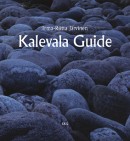 Kalevala Guide
Kalevala Guide
Helsinki: Finnish Literature Society, 2010. 127 p., ill.
ISBN 978-952-222-193-3
€ 24.90, paperback
This book is a brief but comprehensive English-language guide to the Finnish national epic, which was based on the archaic oral, sung folk poetry of Karelia, but collected and personally compiled by the scholar and writer Elias Lönnrot (1802–1884). The epic (first edition 1839, complemented in 1849) is set in a mythic past; technically speaking, the metre is an unrhymed, non-strophic trochaic tetrametre, characterised by alliteration. Contents, characters, places and themes are explained in the Guide, which also explores myths of origin and the significance of the epic. On his eleven trips to Archangel and North Karelia, Lönnrot met some 70 singers. The Kalevala, now translated, at least in part, into more than 60 languages, has inspired artists the world over (J.R.R. Tolkien was a fan, while Henry Wadsworth Longfellow’s Hiawatha imitates the metre and style of the Kalevala). The composer Jean Sibelius and the artist Akseli Gallen-Kallela are perhaps the best known Finnish Kalevala artists. And the inspiration continues: for instance, rock musicians and visual artists make use of Kalevala themes, stories and characters in their work. The book includes a list of relevant websites and a select bibliography.
Garden graft
2 September 2010 | Essays, Non-fiction
A chapter from Vapaasti versoo. Rönsyjä puutarhasta (‘Freely sprouting. Runners from the garden’, Kirjapaja, 2010)
If you sit in your garden and feel a bit like you’re tucked uncomfortably at the end of the dock in a guest berth, the reason is this: the garden hasn’t yet found a place in your muscle memory. Because it is only at the point when the garden has settled into your muscle memory, into your senses in as many ways as possible, that it will feel like your own. And that, of course, takes working in the garden, not just sitting in it.
So you should know your rose – not just its lovely smell but also the memory that you get from the shovel handle of when you planted it, or even the memory of the prick of its thorn on your finger. You can anchor every little detail in your senses, and it doesn’t even take much imagination. The scent of thyme on your fingertips, the downy fluff of a pasque flower against your palm, the silken glow of a peony opening in the morning sunlight – or the sumptuous mist of the wee hours of a summer morning twining over everything, and the rare experience of wading through it. More…
What was Finland reading this summer?
2 September 2010 | In the news
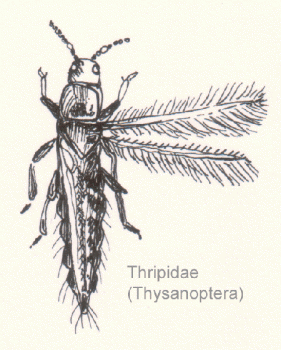 Novels, thrillers and comics were on the June–July list of best-selling books according to the Booksellers’ Association of Finland.
Novels, thrillers and comics were on the June–July list of best-selling books according to the Booksellers’ Association of Finland.
And, as the popular poet, MP, novelist and television celebrity Tommy Tabermann (born 1947) died in June, his collected poems, Runot 1970–2010 became number one of the list.
Sofi Oksanen’s highly popular novel Puhdistus (Purge) has kept itself on the list for a long time, was now at number three. Tuomas Kyrö’s humorous novel about a man in his 80s, Mielensäpahoittaja (‘Taking offense’) was at number seven, Pertti Jarla’s Fingerpori 3 at number eight and Leena Lander’s new novel Liekin lapset (‘Children of the flames’) at number ten.
The top ten list of translated fiction included works by Jo Nesbø, Charlaine Harris, John Irving, Donna Leon and Dagsson Hugleikur.
During the summer there’s clearly enough time for nature observations: The Cloudspotter’s Guide by Gavin Pretor-Pinney, a work presenting birds’ sounds and a book on bugs and creepy crawlies were among the ten best-selling non-fiction books.

